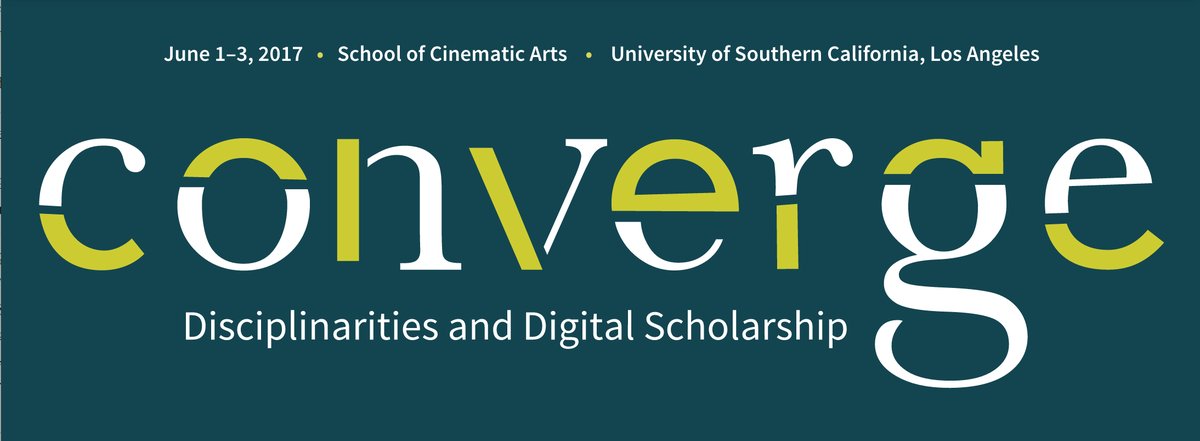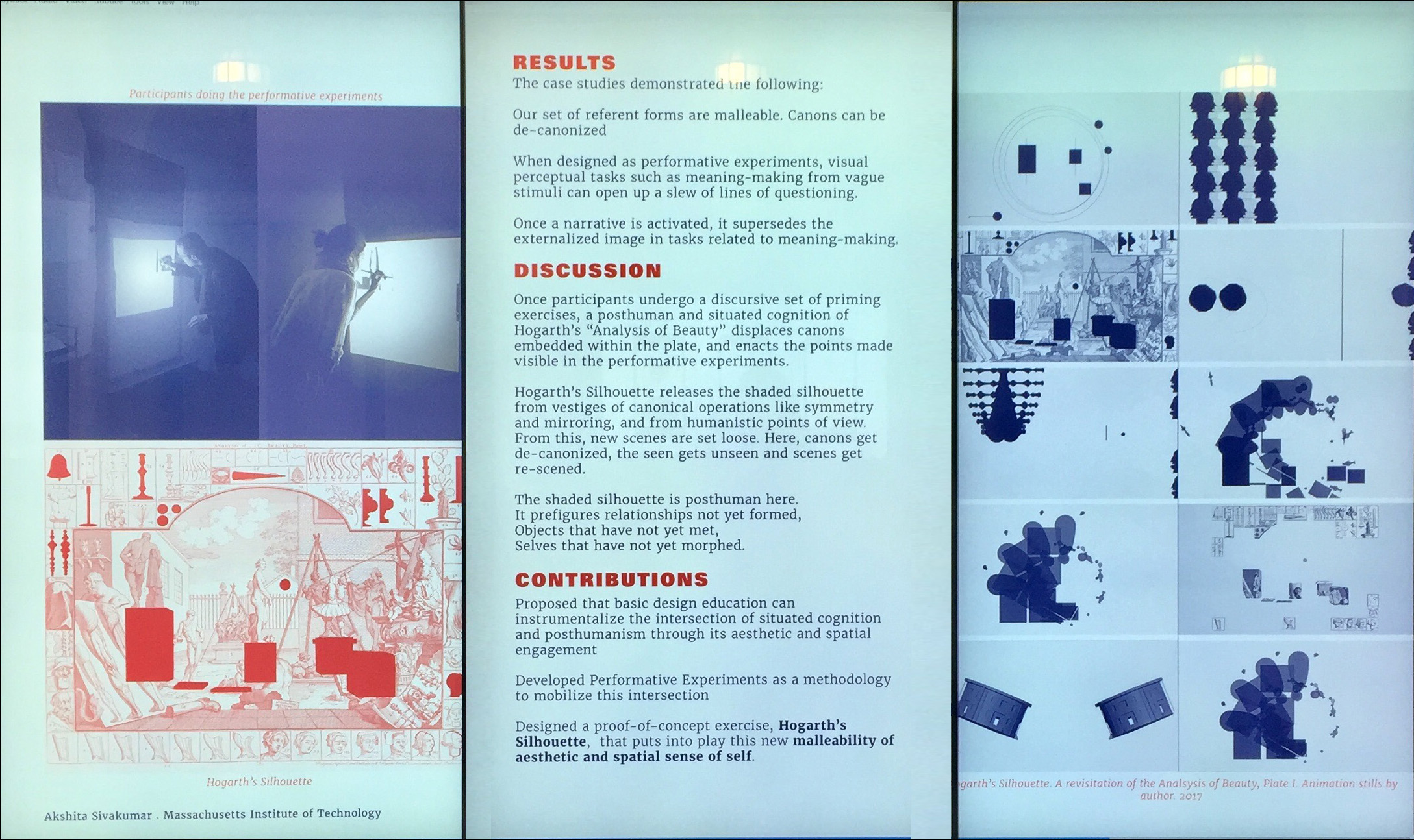DIGITAL AESTHETIC & SPATIAL
SENSE OF SELF
Presentation (double blind, peer-reviewed)AIGA Design Educator’s Conference. June 1-3, 2017
University Of Southern California, Los Angeles
Travel Grant : Dept. of Architecture, MIT
From the organizers:
[Converge: Disciplinarities and Digital Scholarship encourages design educators, design researchers, and designers to take advantage of opportunities in digital scholarship, learn how to collaborate on interdisciplinary projects, and find new intersections within their existing research trajectories. To redefine what it means to be a designer and a design researcher today, we ask: How can design converge with digital scholarship in more than a superficial way? How might aspects of digital scholarship impact design research? What are the key questions at the intersection of design and the humanities? ]
ABSTRACT:
This body of research contends that basic design training requires malleable aesthetic and spatial sensibilities, which in turn can cultivate a changing sense of self. “A sense of self” here draws on William James’s and Ulric Neisser’s plural conception that includes self-knowledge, sense of agency, meaning-making, ownership, and narrative continuity, which all combine to motivate our actions in the world. How we are trained to perceive, apprehend, cogitate, examine, reflect, record, and practice these sensibilities guides how we identify and piece together our experiences in the world as a series of aesthetic and spatial fragments. This construction and cultivation of malleable attributes of self is prescient and relevant to fields beyond design. The site of cultivation lies beyond the mind. I build a case that these contentions are picking up on recent waves in situated and embodied cognition, and posthuman discourse that have each reclaimed the body and the non-human respectively as extended sites of perception and cognition. Rather than working in disciplinary silos that engender the proliferation of canons and inhibit the creation of common ground, design can subsume their motivations in order to make the malleability of self operational by developing new methodologies and suggesting new materials. To achieve these two goals, I embody cognitive science and posthuman discourse, in order to make visible their pursuits, knit together their underlying values, and frame their common calls as design problems. Through this, I develop a new methodology called Performative Experiments that primes the malleability of aesthetic and spatial sensibilities by estranging one from canons and rote moves. Just as parkour engages the displaced center of mass from the human body into the surroundings that are appropriated as an extension of the body, so do performative experiments arrest the spatial and aesthetic aptitudes growing out of a malleable sense of self. I also build a case for the shadow and shadow silhouette as materials with which to engage these methodologies. By making absent inherent material, texture, volume, and depth, they are able to render equal human and non-human, and alienate known formal and spatial attributes of objects, bodies, and events. In order to enact the case I’ve built, I present Hogarth’s Silhouettes as a proof of concept of a foundational experiment in design education. My claim is that it puts into play a malleability of aesthetic and spatial sense of self, which constitutes a new form of design thinking/doing, across disciplines.
[Converge: Disciplinarities and Digital Scholarship encourages design educators, design researchers, and designers to take advantage of opportunities in digital scholarship, learn how to collaborate on interdisciplinary projects, and find new intersections within their existing research trajectories. To redefine what it means to be a designer and a design researcher today, we ask: How can design converge with digital scholarship in more than a superficial way? How might aspects of digital scholarship impact design research? What are the key questions at the intersection of design and the humanities? ]
ABSTRACT:
This body of research contends that basic design training requires malleable aesthetic and spatial sensibilities, which in turn can cultivate a changing sense of self. “A sense of self” here draws on William James’s and Ulric Neisser’s plural conception that includes self-knowledge, sense of agency, meaning-making, ownership, and narrative continuity, which all combine to motivate our actions in the world. How we are trained to perceive, apprehend, cogitate, examine, reflect, record, and practice these sensibilities guides how we identify and piece together our experiences in the world as a series of aesthetic and spatial fragments. This construction and cultivation of malleable attributes of self is prescient and relevant to fields beyond design. The site of cultivation lies beyond the mind. I build a case that these contentions are picking up on recent waves in situated and embodied cognition, and posthuman discourse that have each reclaimed the body and the non-human respectively as extended sites of perception and cognition. Rather than working in disciplinary silos that engender the proliferation of canons and inhibit the creation of common ground, design can subsume their motivations in order to make the malleability of self operational by developing new methodologies and suggesting new materials. To achieve these two goals, I embody cognitive science and posthuman discourse, in order to make visible their pursuits, knit together their underlying values, and frame their common calls as design problems. Through this, I develop a new methodology called Performative Experiments that primes the malleability of aesthetic and spatial sensibilities by estranging one from canons and rote moves. Just as parkour engages the displaced center of mass from the human body into the surroundings that are appropriated as an extension of the body, so do performative experiments arrest the spatial and aesthetic aptitudes growing out of a malleable sense of self. I also build a case for the shadow and shadow silhouette as materials with which to engage these methodologies. By making absent inherent material, texture, volume, and depth, they are able to render equal human and non-human, and alienate known formal and spatial attributes of objects, bodies, and events. In order to enact the case I’ve built, I present Hogarth’s Silhouettes as a proof of concept of a foundational experiment in design education. My claim is that it puts into play a malleability of aesthetic and spatial sense of self, which constitutes a new form of design thinking/doing, across disciplines.



